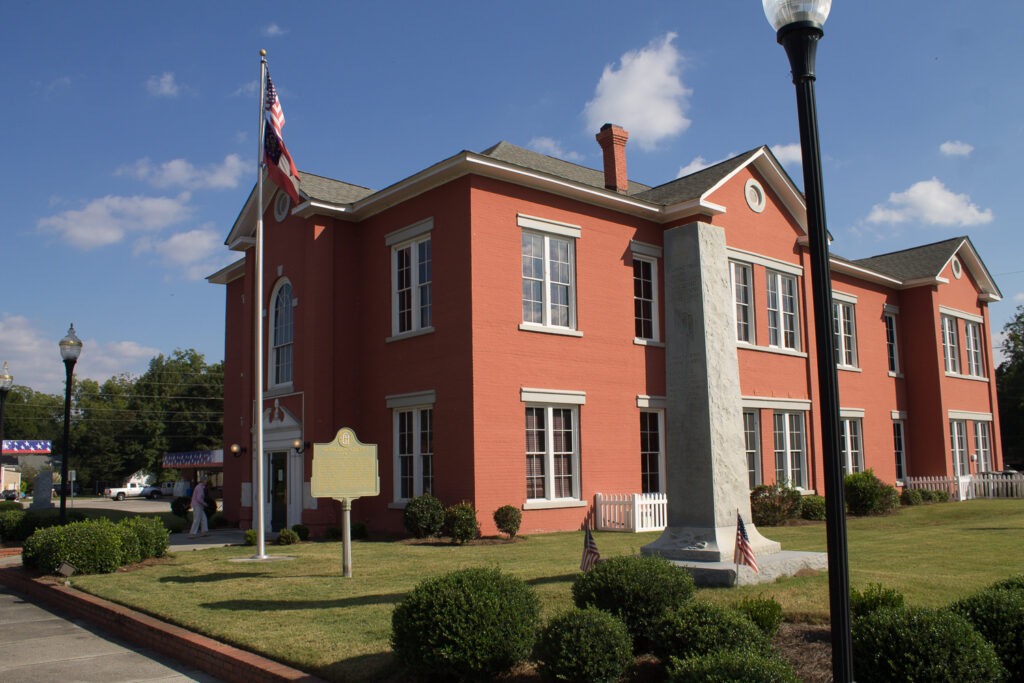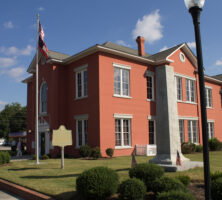Glascock County, in east central Georgia, was created from Warren County in 1857 and named after Thomas Glascock of Augusta, a veteran of the War of 1812 (1812-15) and the Seminole Wars who subsequently served in the state legislature and the U.S. Congress.
Creek Indians originally held the land now encompassed by Glascock County. The first white settlers were German immigrants who congregated around an Indian trading post along the east bank of the Ogeechee River, temporarily establishing a community called Georgetown in 1750, but abandoning it when they moved on to Pennsylvania in 1792. The Indians left the area after signing the Treaty of Augusta in 1783.
The county seat, Gibson, was established on twenty acres of land given by Calvin Logue. William Gibson, a judge, donated $500 toward the building of the courthouse, inspiring the county founders to name the town after him. After lots were surveyed in 1858, settlers began arriving to establish homes and businesses. The first courthouse, built in 1858, served the county until 1919, when a new one (since remodeled) was built. The original courthouse was moved to another site, where it serves as a private residence. Gibson was incorporated in 1913.

Edgehill and Mitchell are the two other incorporated towns in the 144-square-mile county. Edgehill, six miles south of Gibson, was once known as the Jule Wilcher Quarters. It was named Edgehill by a local schoolteacher, Sara Madison Wilcher, who established a school in a log cabin there. Incorporated in 1939, Edgehill is home to several attractive nineteenth-century residences: the James Kelley/Sherman Harris home (1828), the Kelley House (1880), and the Peebles Home (1890). Nearby Carters Lake is a popular recreational area for county citizens. Mitchell, southwest of Gibson, was established in 1886 as a railroad town and incorporated in 1896. It was named for railroad president R. M. Mitchell.
The county’s economy before the Great Depression relied heavily on agriculture. The chief farm products were beef, corn, cotton, cowpeas, peanuts, pork, poultry, and small grains. The Augusta, Gibson, and Sandersville Railroad (later operated by the Georgia and Florida Railroad) ran trains through the county from 1885 until 1934. The Savannah and Atlanta Railway (later operated by Norfolk Southern) built tracks through the eastern part of the county in 1916. In the early twentieth century a few factories (making boxes, fertilizer, and brooms, and canning peas) operated in the county, and a chalk mine operated from 1910 to 1935, but most had gone out of business by the time of the Great Depression. Curtailment of railroad service to the county in 1934 further slowed industrial development. After World War II (1941-45), lumber and lumber products, kaolin processing, and health care services overtook agriculture as the county’s economic mainstays.

Hamburg State Park, on Hamburg Lake near Mitchell, offers lake fishing, boating, and camping. A country store operating in a restored 1921 water-powered gristmill and a museum displaying old agricultural tools are open to visitors.
According to the 2020 U.S. census, the population of Glascock County is 2,884, a decrease from the 2010 population of 3,082.







